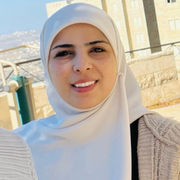By Fayha Shalash – Ramallah
This is just one example of many that highlight the ongoing systematic land confiscation designed to accelerate the annexation of the occupied West Bank at an unprecedented pace.
The recent remarks by Israeli Finance Minister Bezalel Smotrich, advocating the annexation of the West Bank, did not surprise Palestinians. Indeed, these statements align with the actions of Israel’s far-right government, which has been implementing policies to effectively annex Palestinian lands.
Under the guise of security, Israel has been confiscating significant portions of Palestinian territory, leading to widespread land loss since the current government took office.
According to the Wall and Settlement Resistance Commission, Israel has confiscated more than 52,000 dunums of land in the occupied West Bank this year alone. It has also established 12 buffer zones around settlements.
The Commission reported that Israeli planning authorities reviewed 182 structural plans to build 23,267 settlement units on an area covering 14,000 dunums, approving 6,300 of them to date.
‘Bypass Roads’ – How Israel Seizes Land, Isolates Palestinian Towns
Sebastia: A Case Study
The town of Sebastia, located northwest of Nablus, is home to Roman ruins listed on the World Heritage list. It is therefore considered one of the few tourist sites in the occupied West Bank.
Despite its historical significance, Israel recently issued a confiscation order for 1,300 square meters of land adjacent to the site to build military barracks.
This is just one example of many that highlight the ongoing systematic land confiscation designed to accelerate the annexation of the occupied West Bank at an unprecedented pace.
Sebastia’s mayor, Muhammad Azem, told the Palestine Chronicle that the town is subject to a massive process of Judaization, explaining that the real goal of the confiscation order is to lay the groundwork for infrastructure and roads that serve illegal Jewish settlers.
“It won’t stop at confiscating lands, as the area of the archaeological site reaches 2,400 square meters, all of which will certainly be confiscated within the buffer zone surrounding the military facility. This is the culmination of previous decisions,” Azem said.
The Israeli Settlers and Their Stones – The Daily Journey of Palestinian Students in West Bank
Last year, the Israeli government allocated 33 million shekels to fund settlement expansion in Sebastia.
If the Israeli occupation army seizes the archaeological area, the Palestinian population, who rely on tourism for their livelihood, will be denied access and, thus, lose their primary source of income.
For over a year, illegal Jewish settlers have repeatedly raided the archaeological area in Sebastia under religious pretexts, actions seen by Palestinians as a prelude to full control of the area.
“This agricultural area is filled with Roman olive trees, which produce some of the highest-quality oil. Now, these trees and their Palestinian owners are under threat, as access will be denied,” Azem explained.
In the northwestern area of the town, the settlement of Shavei Shomron has already seized around 400 dunums, and now even the lands surrounding it are at risk of confiscation. Palestinians have been barred from accessing these areas under the pretext of their proximity to the settlement.
‘Like Monsters’ – Palestinian Olive Farmers Face Rising Settler Violence
Step-by-Step Plan
Experts and observers say the annexation plan is progressing as rapidly as the policies being implemented to support it.
The scale of land confiscations, combined with road and infrastructure projects that serve illegal settlements while forcing Palestinians into confined residential zones, indicates that the plan is nearly complete.
Writer and political analyst Sari Orabi told the Palestine Chronicle that Smotrich’s statements are serious and reflect Israel’s clear strategy for the occupied West Bank.
The annexation process has already begun, with Smotrich overseeing settlers in the West Bank through his additional portfolio in the Ministry of Defense.
According to Orabi, this arrangement creates a civilian administration over the West Bank, effectively ending the temporary nature of its military occupation.
Cutting Down Olive Trees – Israel’s Way to Steal Palestinian Land
“What remains is the third and final step: extending sovereignty. Israel speaks of two concepts. The first is annexation, which involves expanding its borders to include the West Bank. The second is extending sovereignty—essentially annexation but framed to minimize international backlash,” he explained.
Orabi elaborated that the areas likely to be included in the annexation are the settlements, which would then be subjected to Israeli law, similar to cities like Tel Aviv, Haifa, and Akka.
According to Orabi, Israel is only debating the methods: Will annexation include all of Area C, just the settlements, or the Jordan Valley? Will it happen in stages?
“The annexation decision will effectively end the peace project because it eliminates any political role for the Palestinian Authority. It will reduce the PA to a local administrative or security body for Israel, stripping it of its political legitimacy,” Orabi concluded.
“This is one of the most dangerous steps Israel has taken, creating a new reality that entirely erases the possibility of a peace process.”
(The Palestine Chronicle)

– Fayha’ Shalash is a Ramallah-based Palestinian journalist. She graduated from Birzeit University in 2008 and she has been working as a reporter and broadcaster ever since. Her articles appeared in several online publications. She contributed this article to The Palestine Chronicle.
The post From Confiscation to Sovereignty – The ‘Third Step’ in Israel’s Annexation Strategy appeared first on Palestine Chronicle.